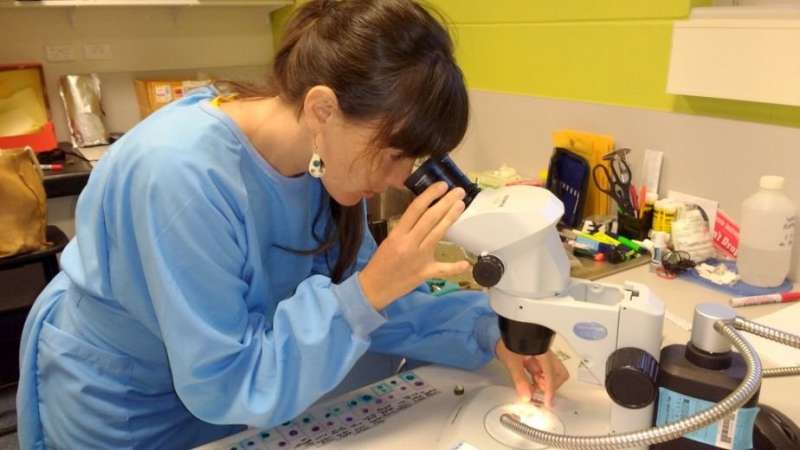Trees change inside as drought persists

James Cook University scientists in Australia have found that trees change their anatomy in response to prolonged drought.
JCU's Associate Professor Susan Laurance has led the Daintree Drought experiment since 2015, in collaboration with colleagues from the University of Edinburgh and Imperial College in the UK.
The project involves using plastic sheets to reduce the rainfall getting into a half hectare of rainforest, artificially creating an extended and drier dry season. A neighbouring half hectare is uncovered and gets the normal amount of rain to allow close comparison between the two groups of trees.
"The purpose of the experiment is not to kill the trees, but to understand how trees are changing in the short term by simulating longer dry seasons in the field," said Dr. Laurance.
She said the impact of drought on plants is usually studied in glasshouses, but that approach falls short in accounting for the responses of mature trees (compared to seedlings) and the complexity of species interactions in diverse tropical rainforests.
The results have recently been published in the journal Ecology and Evolution.
Lead author Professor David Tng said they found the trees were changing in their wood anatomy, consistent with the fact that they have less water to use.
Co-author Dr. Deborah Apgaua said that some species developed smaller water-carrying vessels.
"Others showed shrinkage in their tissues, likely reflecting the use of water stores. One of the species even started to show blockages in their water conducting vessels and we also found thinner leaves in some," she said.
Dr. Tng said it showed that mature rainforest trees can modify their anatomy to some degree as an adaptation to drought. He said it was an important finding, given their place in the environment.
"Trees in tropical rainforests play an important role in the water balance of the planet. Every tree is like a fountain, drawing water up from the soil and putting it out into the atmosphere. Just one large mature tree may draw up well over 100,000 litres of water a year. So a forest of trees is very important in maintaining the local climate."
Dr. Laurance said it seemed likely tropical rainforests in many part of the world would be facing more frequent or more severe droughts due to climate change.
"We don't yet know the limits of their adaptability, but the changes we've seen in the hydraulic properties of these trees in the Daintree would certainly reduce their ability to transport water, and that would mean the trees are less able to put out water into the atmosphere," she said.
Dr. Laurance said if prolonged drought occurs, the reduced ability of trees to transport water may lead to local changes in hydrological cycles, and ultimately changes in forest vegetation.
She said research was continuing into the long-term effects drought would have on the trees and the knock-on effect for the rest of the environment.
More information: David Y. P. Tng et al, Rainforest trees respond to drought by modifying their hydraulic architecture, Ecology and Evolution (2018). DOI: 10.1002/ece3.4601
Journal information: Ecology and Evolution
Provided by James Cook University





















